Pūrākau o ngā kura Te Tai Tokerau

TERM 3 2023
Mana Moana
Mana Tiaki
Te Kura o Te Kao
Nurturing physical literacy
Te Oma Roa a Tohe
- Creating buy in for cross country


TERM 3 2023
Mana Moana
Mana Tiaki
Te Kura o Te Kao
Nurturing physical literacy
Te Oma Roa a Tohe
- Creating buy in for cross country
Pūrākau – Story
Sharing of ideas through storytelling creating a shared meaning and identity.
Kākano – seed
If a seed is in the right place it will therefore grow, planting the seed of ideas in hopes of pūrākau to inspire and grow.
Pū – root
While the stories may originate from another place the roots that stem can grow to show a different perspective and narrative.
Rākau – tree
The stories are embedded deep within the school communities making the tree collectively stronger.
Kaupeka – branch
The branches from each pūrākau are the representations of taking inspiration and knowledge from each story to therefore make it your own. This context is about perspectives and what you can take and add to the pūrākau.
Pūrākau o ngā kura Te Tai Tokerau –Stories of the Northland schools
Pūrākau in this context, represents how storytelling can be from many different perspectives, narratives, experiences and lessons from across Northland. Each story is the rākau (tree) in which pū (roots) can grow illustrating perspective within a story. Pūrākau hold knowledge that may inspire. Kākano (seed) is planted for you to use the knowledge in a context that is meaningful to your school and community.
Pūrākau o ngā kura is a magazine that will be distributed each term where your stories are collated to capture knowledge and inspire. The stories are those from within the Northland school community and this resource is yours to make your own in hopes of being able to support schools across Northland to tell your stories, share learnings and celebrate success.
Read on for the stories of the schools. Healthy Active Learning Te Tai Tokerau.
Kua roa a Te Kura O Te Kao e whakatō ana i ngā mātāpono o te ‘Kaitiakitanga me te manaakitanga’ i roto i ngā uri o tēneki kura, i raro hoki i ngā akoranga a ō mātou kuikuia, kaumātua. Nō mai rā anō ngā kuikuia, kaumātua o te hāpori nei e whakatō ana i ngā tikanga moana ki ngā uri whakatupu, i reira ka toko ake ai te hiahia kia mahi tahi te kura nei ki te rōpū Dive Zone o Te Pēwhairangi, e kaha ake ai te māramatanga ki ngā mahi ruku.
E whakapono kaha ana mātou ki te kaupapa PADI hei huarahi ako e whakapakari ai ngā pūkenga katoa o te ruku, ngā whakatūpatotanga i roto i te wai, te take o te haere ātakirua, ā-rōpū
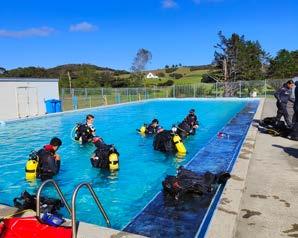
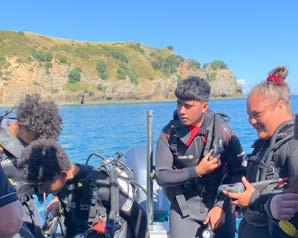
rānei, ngā tikanga rauora me ngā tikanga whakaora i te tangata. He mea tūhono tēnei kaupapa ki ngā akoranga me ngā tikanga tuku iho a ō mātou mātua tūpuna. Ka whakamanahia ngā paerewa ako e te NZQA i roto hoki i te kirimana whakamana i waenga i a mātou me te tarahiti o te kura whakangungu ruku moana.
Kia mutu mai tēnei kaupapa, ko te hiahia kia kawe tonu i ngā akoranga i roto i ngā kaupapa o te hāpori, e hāpai anō i ngā
tikanga kokohi kaimoana, whāngai tāngata, manaaki manuhiri, i runga i te mōhio ki ngā mahi, i runga hoki i te māia ki te mahi i ēnei mātauranga.
Ngā Hua o Te Kaupapa
E whakamiharo ana ki ngā hua o te kaupapa nei, nā tēnei kaupapa, ngā uri o te wharekura, i akiaki kia arohaina, kia manaakitia, kia pūmau te tiaki i te whenua me te moana, i raro anō i te kaupapa o Mana Tiaki Mana Moana. E mōhio ana anō rātou me pēhea te whāngai i ō rātou ake whānau, hāpori, hapū, iwi, nā ēnei akoranga. Ko ngā pūkenga me ngā tikanga ruku i ākona i tēnei kaupapa, he mea whakapiki i te mōhioranga ki ngā tikanga kokohi kaimoana me te ū hoki ki tō rātou mana tiaki i nga wāhi taiao o te kāinga me ngā wāhi katoa o te Te Hiku o Te Ika.
E hari e koa te iwi kāinga nei! I runga anō i te mōhio kua whai pūkenga ēnei mokopuna a rātou, e hāpai ake ai te taha manaaki me te taha whāngai i te tangata, i te hāpori me te whānau whānui o Te Kao.
E tautoko marika ana ngā tarati o te marae o Pōtahi i tēnei huarahi Mana Tiaki Mana Moana.
E mōhio ana te hāpori ka taea e ngā
tauira nei te kokohi kaimoana mō ngā tini
kaupapa o te iwi. Hei tāpiri ake, ko ngā mōhioranga ki ngā whakapapa, tikanga me ngā kōrero o te moana i te takiwā o Te Kao.
He aha te mea i whai hua ki te angitu te kaupapa?
Ko ngā tino tāngata e kaha tautoko ana i te kaupapa nei, ko ngā kaumatua me ngā tohunga moana o Te Aupōuri, ko Heta Conrad, ko John Slade, Anaru Rieper me Rangi Everitt ko ngā tāngata nei he kaha anō nō rātou ki te whakatō i ngā mōhioranga o te ao moana ki ngā uri katoa, ehara ko rātou anahe, ko mātou noki ngā kaiako me ngā mātua e kuhu mai ana ki te kaupapa nei o Mana Tiaki Mana Moana.
Ko ngā pukenga maha o ngā tāngata nō Te Pewhairangi, Bay of Islands Dive Zone, nā rātou i whakaako mai i ngā ture, ngā kōrero tohutohu moana, pukenga ruku, tiaki taiao, tiaki moana me ngā tūpatotanga o te ao ruku i ngā

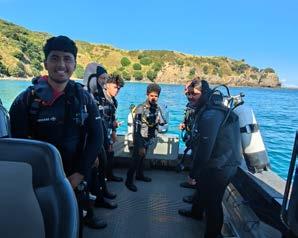
Portland School have shifted to delivering the Ka Ora, Ka Ako Lunch programme internally
Allowing them to better align it with their school values, strategic goals and allowing them to imbed a more holistic approach to kai, and hauora, as a result.
At Portland School, the implementation of the Ka Ora, Ka Ako | Healthy School Lunches Programme initially started by utilising an external provider to provide the school lunches, which proved to be ideal for the size of the school at that time, accommodating 40 students. The external model proved helpful in introducing the tamariki to new foods and the students’ palates began to develop.
The external model, however, did not align with the schools’ strategic goals of environmental sustainability and gardento-table principles. The schools’ teachers and board worked hard to establish Ka Ora, Ka Ako that aligned with these goals, therefore switching to internally delivering the programme. Portland School decided to invest significant funds into developing the kitchen space to accommodate the growing roll of now 76 students.
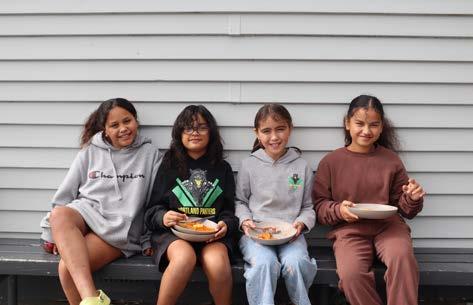
The shift from the external to the internal model presented an opportunity to provide a job within the local community, which also aligns with the schools’ goals. Portland School has now employed someone who has become an integral part of the team. There is now more control over what is being served to the students and it can complement the school lunches with what is being grown in the gardens as well as what tamariki are learning in class. Having school caterer Sandra Browne on board for the preparation of kai, she is able to cater to the fluctuating attendance. The school can now prepare meals for the number of students present each day, therefore reducing waste.
Portland school has also incorporated a focus on whanaungatanga by creating a space for connection between tamariki and all school staff. Through reflection, staff realised that by serving meals at the beginning of lunchtime students would quickly eat to then be able to get out and play. The mealtime has now been changed to the end of the break adopting the play, eat and learn response, with music playing, tamariki can be seen dancing,

riding scooters, playing on the playground or exploring the taiao. Before each meal, a karakia is said, enabling the students to connect with the food they are eating and express gratitude for it. All school staff are present and eat with the tamariki, role modelling healthy eating habits, table manners along with washing up once they have finished their kai.

In addition to the school lunches programme, Portland School also has a teeth brushing programme. This programme aims to promote good oral hygiene habits among the students and improve their dental health. Tamariki and kaiako brush their teeth every day after lunch, this being another lens of hauora that has been implemented into the day for tamariki.
Portland School Principal Shane Nicholas commented that the tamariki are “way more focused, more engaged and just look well and that’s just from a good meal a day. Coupled with the teeth brushing programme you are really setting tamariki up for success.” The kitchen has become a hub of activity for the school.
As the school cook, Sandra Browne is not a teacher, this allows her to build relationships with the children that are different from those of the teachers as Principal Shane explains “She is an absolute rockstar in the tamariki’s eyes.”


Another more unexpected benefit that has been seen from this new approach has been the aroma of cooking food making the students excited about eating and has helped build healthy appetites.
Rael and Mia, students at Portland school say the kai is “yum and delicious and different to what I would normally have at home”. They go onto explain how they get to grow vegetables in the school garden such as lettuce and kūmara and that kūmara chips are their favourite.
Sandra the school caterer comments that she enjoys “seeing the kids enjoying eating and looking forward to it”. Tamariki are encouraged to try new foods and as all students are eating together this encourages them to give new foods a go when they see their friends and kaiako eating them.
Overall, the Ka Ora, Ka Ako programme has been successful, benefiting the students’ health, engaging the community with the school, and building capacity through investments in the kitchen and garden. Principal Shane, the Board of Trustees and the school staff have been instrumental in the success of the programme, providing leadership and support to establish a more sustainable and healthy approach to school lunches.
Where to from here? The next steps for Portland School are focusing on bringing in a school-wide policy on sugar and what kai tamariki are bringing to school, having important conversations and focusing on educating the students and whānau. Along with this, a further steppingstone will be incorporating tamariki in the preparation phase of the Ka Ora, Ka Ako programme.
“I just cook what I would at home, it’s home-cooked meals, blending vegetables up so they are ‘hidden’ throughout the meals and sauces.”Tamariki washing up once finished eating. Teeth brushing in class after lunch.
Breeze has a message for you; “Definitely do it! There are only good benefits that come with getting active and it’ll help you not only physically but also mentally”.
Breeze has always liked physical activities but since getting an injury she was hesitant to take part in sport, walking or anything that would seem to overexert herself. With help from support people such as her mum and her support person from Green Prescription at Sport Northland, she has been able to get into a routine of being more physically active and is more eager to try new activities like swimming, going for walks, yoga and more.
Breeze has noticed a lot of benefits in her lifestyle, like not feeling so sluggish and has more energy throughout the day.
Her sleep has increased, and with being consistent with exercising is noticing the exercising is getting easier as she gets fitter. She is most proud of being able to walk the Hātea Loop without it over exhausting herself and needing to rest the next day.
Breeze is looking forward to continuing this journey of healthy lifestyle change.

Breeze has since completed the Green Prescription programme, sustaining her own activity. She attends Kensington Fitness and attends the yoga classes and workouts on the gym floor. Eva, one of the gym floor instructors was very supportive in Breeze’s induction at Kensington Fitness, which gave Breeze further confidence also in this journey.
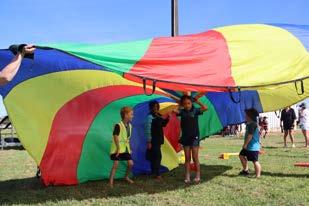
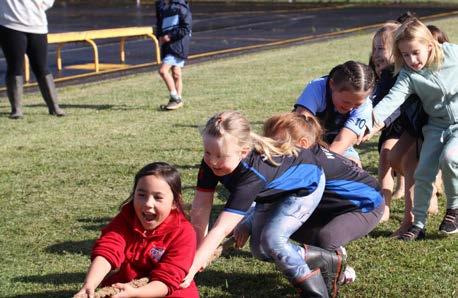
In the pursuit of a well-rounded quality education for our ākonga we eagerly teach, it is important to recognise that academic growth alone does not suffice if we want our tamariki to flourish.
Physical literacy is more than just being physically active; it incorporates an understanding of fundamental movement skills, as well as the confidence and motivation to participate, and the motivation to engage in a wide range of physical activities. Physical literacy is about equipping ourselves as individuals and our ākonga with the tools to want to move with confidence in different environments and contexts, in a way that is meaningful to each person.
Physical literacy serves as a foundation to a lifelong appreciation for and involvement in physical activity. The development of physical literacy encourages an active lifestyle that enriches an overall quality of life. This will look different for each person, for me, that might include a leisurely bike ride with whānau, play time at the playground with tamariki, a brisk hikoī through local walking tracks with hoamahi, or an enthusiastic game of football or cricket at their local club or beach.

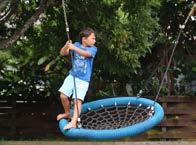
We all play essential roles in fostering a positive attitude towards movement and supporting tamariki and their interests through being active in different ways. It can begin with integrating movement into the curriculum, encouraging ākonga to explore various activities and emphasising the joy of movement rather than competition for ākonga who don’t get a sense of value or enjoyment from competition.
lifelong promise through physical literacy: In championing the significance of physical literacy, we set upon a journey that extends far beyond the scope of movement alone. At its heart, our collaborative approach needs to ensure we are deliberate in action, towards our key intention - to nurture the individuals’ relationship with physical activity across their lifetime, in a way that works best for them.
To foster physical literacy effectively, a holistic approach is required. This involves creating a culture that values and prioritises physical activity and movement, while considering the wider implications of movement such as mental, spiritual and social wellbeing. Physical literacy can be achieved through initiatives such as physical education or dance and drama classes, extracurricular sports, active transportation and taking movement outside the school gate. Ultimately creating opportunities for integration of movement into our everyday routines.
By nurturing physical literacy, we set a positive example for our tamariki, encouraging a cycle of healthy habits that can be passed down through generations. When we weave physical literacy into our everyday, we are empowering individuals to lead healthier, happier, and fulfilling lives, creating a ripple effect that extends to whānau, communities, society and beyond.
Educators play a crucial role in shaping the future of physical literacy by fostering nurturing environments and advocating for its integration into the educational journey of every ākonga. Now, take a few moments to reflect. Engage with the following questions, for they hopefully will serve as the launch pad for your personal exploration of physical literacy.
• What does physical literacy mean to you?
• Reflect on your role as a role model how do you encourage a love of being active in others? What lessons from your own experiences do you hope to pass on?

cross country experience for our tamariki.
The process for planning this event is outlined below.
Create a cross country experience which:
• Had a 100% student buy in
• Was meaningful beyond being a competition
• Met our matāpono
• Created a love for the outdoors
Prior to planning our physical education teaching and learning unit, our whole school wānanga together to choose an inquiry topic which aligns with our local history and science curriculum. Our physical education unit is then designed in a way which integrates with this inquiry topic rather than as a stand alone unit with no relation to the rest of the teaching and learning which is occurring in the classroom. In this instance our topic was Tohe and the local fauna he would
have interacted with on his journey. Tohe is a local wheinga who in his old aged walked the length of 90 mile beach and many of the places are named for his interactions with them along this journey including the beach Te Oneroa a Tohe
Our cross country unit began with teaching about Tohe. The teaching included finding whakapapa links between students and this wheinga. In doing so we make the history we teach relevant to our students as well as ensuring the cross country event is meaningful as an experience which reinforces the learning the students have undertaken during the term. Students are preparing not just for a competition but to undergo a journey following the footsteps of the wheinga they have studied. This creates buy-in from students who would not otherwise wish to
compete, and the event is just another part of their learning for the term. It also removes pressure from students who are not competitive runners as the learning and experience is the primary focus.
Our cross country was held on Te Oneroa a Tohe. It was followed by a fun day at the beach and then a beach clean up, again to tie into the learning the students had undertaken with regards both Tohe and local fauna. It was important that this event was held on a meaningful site rather than an exercise carried out at school, this made participation a part of the trip and not just another day running around the same field. In other words the trip made it a more stimulating experience which helped to create enthusiasm from students.
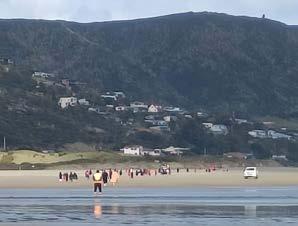
The location tied into the unit and ensured meaningful participation from all students. Our students crossed streams, struggled through soft sand, clambered over rocks and saw the same birds that Tohe himself had done. They had knowledge of the location they ran on and the birds they saw which brought the location to life and created a narrative of striving to succeed for our students. They were following his footsteps and if he could do it so could they. The narrative this created for students is very different to just trying to outrun other students in their age band as it is one of personal struggle and effort. This aspect was further enhanced as students were given the chance to gain small headstarts of ten metres by answering questions about Tohe rewarding their prior learning and shifting the focus to Tohe and his journey and away from the competition.
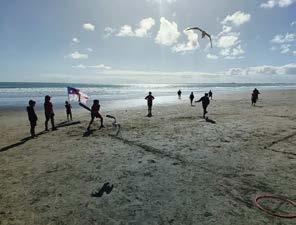
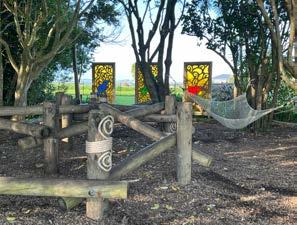
Ruawai Primary School wanted to create a space unique to their environment and the wellbeing and physical needs of their tamariki. They noticed that there was a clearing at the edge of their Ngahere, which had the potential to be so much more. When the Ministry of Education tagged a grant for a School Improvement Project (SIP), Ruawai were able to move forward in planning a space that they normally would not be able to, due to lack of funding.
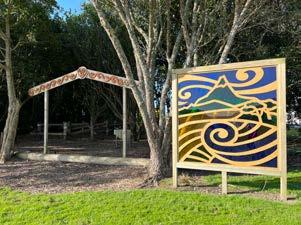
Teachers introduced the idea of creating a new play space to their children and spent time in the Ngahere talking, planning, and sharing. After viewing these plans, it was important to sit back and observe how children actually played during break times. Looking for patterns of play.
Teachers continued to research and share ideas using playground websites and discussing interesting play structures. This included also discussing what teachers valued in terms of learner development and engagement. (Sara recommends the book ‘Design, Build, Play’ by Robin Christie and the team at Childspace, which have provided significant inspiration and assistance).
The construction process began with the Ruawai office administrator Michelle, her husband Tim, and their digger. They came in to clear the space and prepare it for the next steps which was to put the play space together. The construction team compiled all the ideas from the research and with the help of whānau and community members, put the Ngahere play space together. The play space consists of ropes strung from tree to tree
and secured with nails that are bent to hold the ropes in place in koru designs – again, reflecting the natural environment. The ropes are used in a variety of ways such as; a Tarzan style swing, balancing ropes and interweaved ropes to create spider webs to climb.
The essential factor that has supported the planning and development of this play space has been the people skills and resources available within the Ruawai community. Support such as this has meant that Ruawai were able to make funding stretch further.
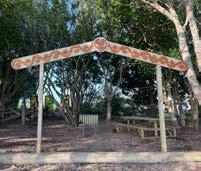

It’s a space for challenge, risk, and bravery. As well as socialising, self-regulation, and gaining sensory satisfaction. The space is great for tamariki developing confidence and skill in their body control, agility and coordination This is also a wonderful teaching and learning space with its natural shade and peacefulness.
Children have expressed their gratitude in the beauty and uniqueness of their new Ngahere
After the first addition of the climbing ropes, children too began to see the possibilities and came up with their own ideas of adding further challenges, which included the rope bridge. The Ngahere has proven to really build persistence, self-confidence and sense of achievement.

It was important to consider what health and safety would look like within this play space to ensure the safety for Ruawai’s young, smaller learners. Sara used the ECE playground safety standards as a guideline as well as the advice of the Childspace workshop team (who have created rope climbing structures in their ECE centres) to avoid any finger toe entrapments. It was important for staff to watch how their learners used the ropes, including the risks they took. Adjustments were made including increased challenge and adding lower ropes to support slow, gradual accessibility for smaller children.
Also, the important thing to remember is that teachers at Ruawai don’t physically assist learners up or down the trees and ropes because if they are not physically or emotionally ready to be at a certain height or to take on a certain challenge, then it is not safe for them to be up there. Instead teachers support through encouragement, time and the opportunity to revisit.
What is Healthy Active Learning?
Healthy Active Learning is a joint government initiative between Sport NZ, Te Whatu Ora Health New Zealand, and the Ministry of Education to improve the wellbeing of tamariki and rangatahi through healthy eating and drinking and quality physical activity.
Sport Northland
97 Wetsern Hills drive, Kensington, Whangārei. www.SportNorthland.co.nz
Vision:
Purpose:
Scan for more information on Healthy Active Learning and stories from schools across Te Tai Tokerau.
All Northlander’s moving more for enhanced wellbeing
To enrich Northlander’s lives by inspiring and enabling more movement